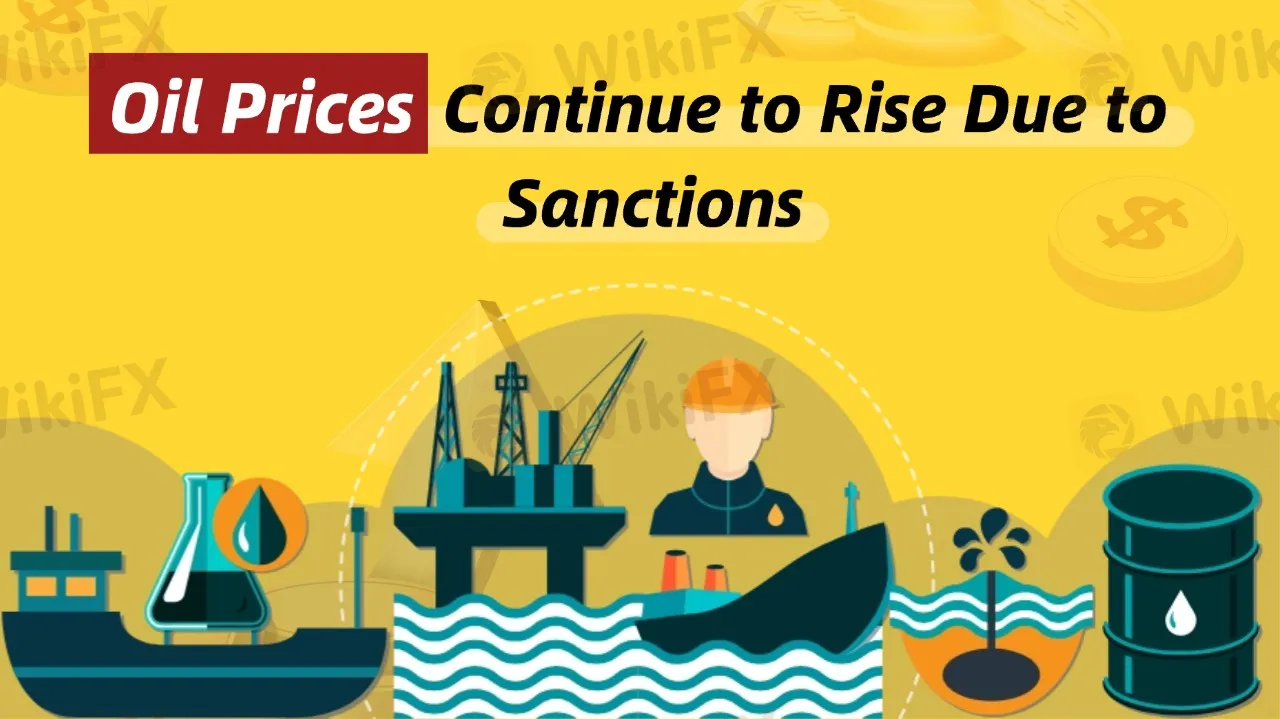简体中文
繁體中文
English
Pусский
日本語
ภาษาไทย
Tiếng Việt
Bahasa Indonesia
Español
हिन्दी
Filippiiniläinen
Français
Deutsch
Português
Türkçe
한국어
العربية
Oil Prices Continue to Rise Due to Sanctions
Abstract:Last Friday, oil prices closed slightly lower but increased for the fourth consecutive week, mainly due to the impact of the latest U.S. sanctions on Russian energy trade, which heightened concerns about oil supply disruptions.

Brent crude futures dropped by 0.6%, settling at $80.79 per barrel, but rose 1.3% for the week. U.S. crude futures fell by $0.80, or 1%, to $77.88 per barrel, climbing 1.7% for the week.
Sanctions on Russia are tightening supply in countries like Europe and India. Furthermore, investors are evaluating the potential impact of U.S. President-elect Trump's return to the White House. His nominee for Secretary of the Treasury indicated plans to implement stricter sanctions on Russian oil.
Following the Gaza ceasefire agreement, expectations grew that the Houthi rebels in Yemen would halt attacks on ships in the Red Sea, which placed some pressure on oil prices.
Despite a slight pullback last Friday, oil prices remain on an upward trend due to concerns over the Russian sanctions. U.S. sanctions on Russian oil exports have intensified global oil supply tightness, driving prices higher. According to HSBC's latest report, the bank raised its 2025 Brent crude price forecast from $70 per barrel to $73, and its first-quarter forecast from $70 to $77. This adjustment mainly reflects the impact of the latest U.S. sanctions on Russia's energy market.
U.S. sanctions have nearly doubled the number of tankers on the sanction list, which has contributed to recent price increases, pushing oil above $80 per barrel. Although this effect may be short-term, Russia's oil and product exports are expected to face significant pressure.
Overall, despite the pullback in oil prices, the uncertainty surrounding global oil supply and U.S. sanctions on Russia continue to support price increases. The market is caught between OPEC+ overcapacity and persistent geopolitical risks.
HSBC expects Brent crude prices to fluctuate between $70 and $80 per barrel, slightly lower than in the past two years. OPEC+'s ample capacity is expected to limit price surges, but geopolitical risks, particularly the impact of sanctions on Russia, could still push oil prices higher. Investors need to closely monitor market dynamics and the further development of sanctions to assess future price movements.

Disclaimer:
The views in this article only represent the author's personal views, and do not constitute investment advice on this platform. This platform does not guarantee the accuracy, completeness and timeliness of the information in the article, and will not be liable for any loss caused by the use of or reliance on the information in the article.
Read more

Yen Rebounds! Is This the Opportunity Investors Have Been Waiting For?
The Japanese yen has staged a sharp rebound, breaking below key technical levels against the U.S. dollar. With diverging central bank policies, heightened risk sentiment, and a shifting macro backdrop, is this a real opportunity—or a trap?

VIPS Group of Companies Exposed: ED Seizes Assets in 100-Crore Ponzi Forex Scam
The Enforcement Directorate (ED) has cracked down on an INR 100-crore scam involving illegal forex trading and Ponzi schemes by seizing immovable assets and digital devices besides freezing bank accounts across multiple cities in India. Read more.

Foraxi Joins the WikiFX Family
Explore how the addition of Foraxi to the WikiFX family opens up forex trading growth avenues for traders around the world.

Iran’s Strait Strategy: Is the World Ready for $100 Oil?
Tensions in the Middle East are rising quickly, and global oil markets are already feeling the pressure. Since Iran and Israel entered open conflict, oil prices have jumped from around $60 to nearly $80 per barrel. Now, with the United States joining the fight and launching strikes against Iran, the situation has become even more serious. Iran’s threat to seal off the Strait of Hormuz could ignite a global energy meltdown, spike oil prices beyond $100, and unleash economic chaos across the world.
WikiFX Broker
Latest News
Consob Blocks 7 Fraudulent Investment Websites Amid Ongoing Crackdown
MyFundedFutures Tightens Compliance Measures Following Regulatory Pressure
Investors Beware! The Pound May Face a Downturn in the Second Half of the Year
Latest FCA Warning List Out! Beware & Protect Your Money
Before You Trust EterWealth with Your Money, Read This!
Super Micro shares fall on planned $2 billion convertible debt offering
Stock futures rise after Trump says there is a ceasefire timeline for Iran-Israel conflict: Live updates
Asia-Pacific markets set to rise after Trump says Israel and Iran agree to ceasefire
CNBC Daily Open: The strange times of missiles-led peace'
FXTM: A Closer Look at Its Licences
Currency Calculator


